| |
|
|
48.
| It is still Nightfall |
| |

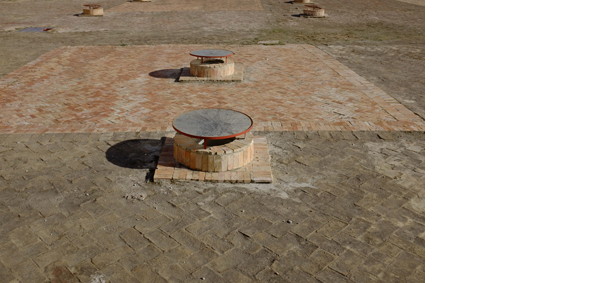
2015, serie of 7 photos, inkjet print, 160 x 240 cm.
Exhibition view of C'est encore la nuit, Prison Qara, Institut Français, 2015, Meknès.
Courtesy of the artist and Analix Forever, Geneva.
Ed. of 5 + 2 A.P.
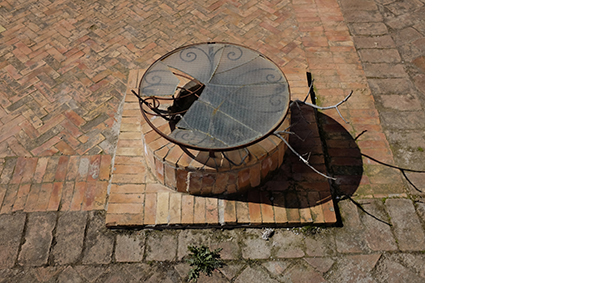
2015, serie of 7 photos, inkjet print, 160 x 240 cm.
Exhibition view of C'est encore la nuit, Prison Qara, Institut Français, 2015, Meknès.
Courtesy of the artist and Analix Forever, Geneva.
Ed. of 5 + 2 A.P.
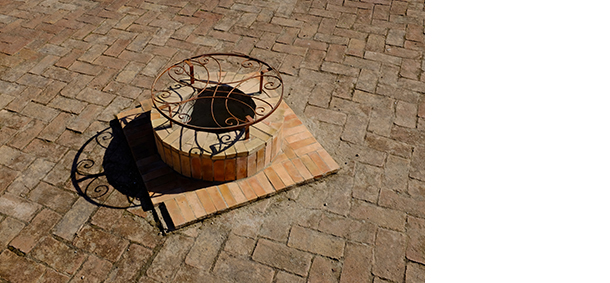
2015, serie of 7 photos, inkjet print, 160 x 240 cm.
Exhibition view of C'est encore la nuit, Prison Qara, Institut Français, 2015, Meknès.
Courtesy of the artist and Analix Forever, Geneva.
Ed. of 5 + 2 A.P.
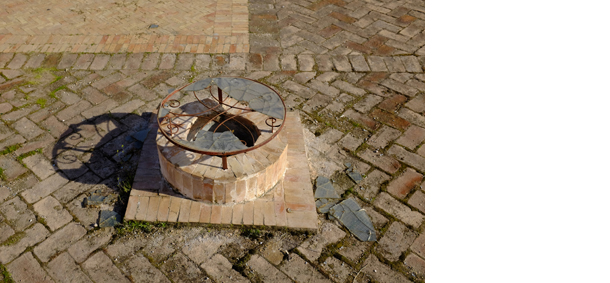
2015, serie of 7 photos, inkjet print, 160 x 240 cm.
Exhibition view of C'est encore la nuit, Prison Qara, Institut Français, 2015, Meknès.
Courtesy of the artist and Analix Forever, Geneva.
Ed. of 5 + 2 A.P.
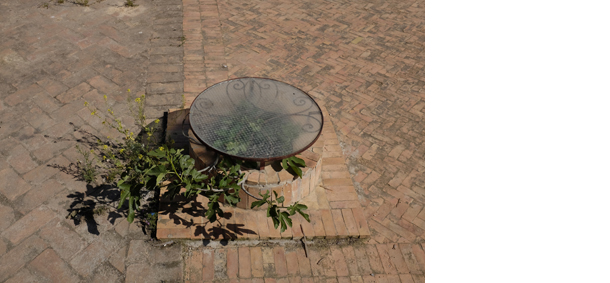
2015, serie of 7 photos, inkjet print, 160 x 240 cm.
Exhibition view of C'est encore la nuit, Prison Qara, Institut Français, 2015, Meknès.
Courtesy of the artist and Analix Forever, Geneva.
Ed. of 5 + 2 A.P.
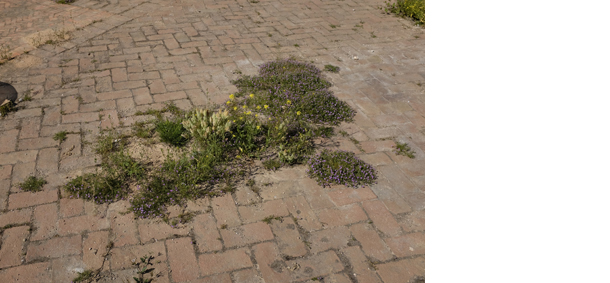
2015, serie of 7 photos, inkjet print, 160 x 240 cm.
Exhibition view of C'est encore la nuit, Prison Qara, Institut Français, 2015, Meknès.
Courtesy of the artist and Analix Forever, Geneva.
Ed. of 5 + 2 A.P.
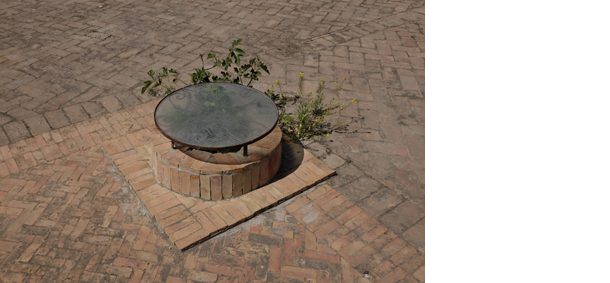
2015, serie of 7 photos, inkjet print, 160 x 240 cm.
Exhibition view of C'est encore la nuit, Prison Qara, Institut Français, 2015, Meknès.
Courtesy of the artist and Analix Forever, Geneva.
Ed. of 5 + 2 A.P.
'' mounir fatmi discovered this place, he learned that this prison had become a place of freedom for the youth of Meknes who often come here as couples and carve their love into the walls.
He therefore chose to use these halos of light that provide a breath of air to this prison to create his installation.
It’s still Nighttime is made up of 80 circles placed under the rays of light from the openings. ''
Florence Renaut-Darsi, April 2015

It is still Nightfall
Exhibition view of A Journey to Freedom, The Tasmanian Museum and Art Gallery, 2018, Tasmania.
Courtesy of the artist.
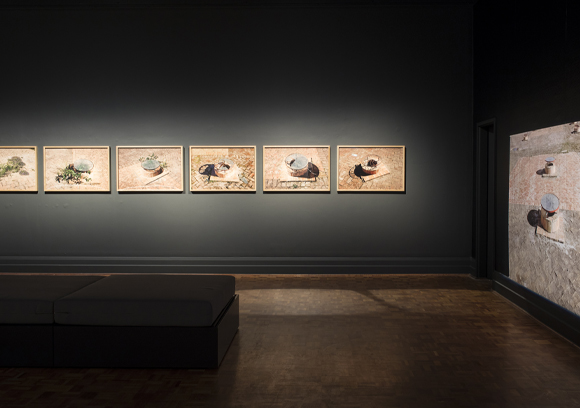
It is still Nightfall
Exhibition view of A Journey to Freedom, The Tasmanian Museum and Art Gallery, 2018, Tasmania.
Courtesy of the artist.
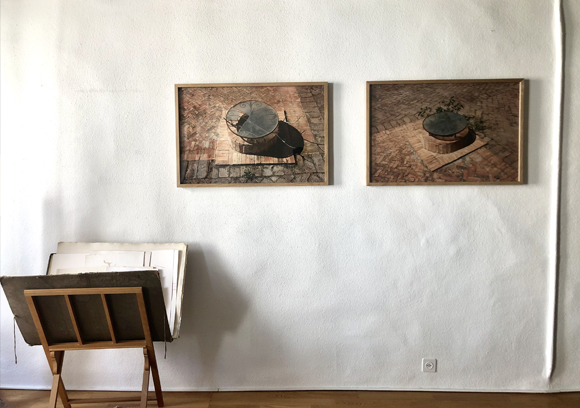
It is still Nightfall
Exhibition view of Robert Montgomery mounir fatmi, Analix Forever, 2018, Geneva.
Courtesy of the artist.
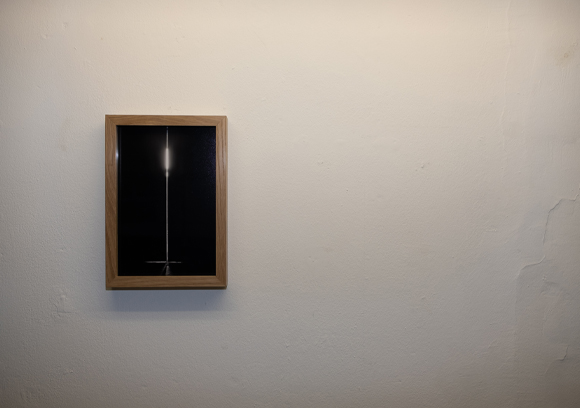
It is still Nightfall
Exhibition view of Robert Montgomery mounir fatmi, Analix Forever, 2018, Geneva.
Courtesy of the artist.
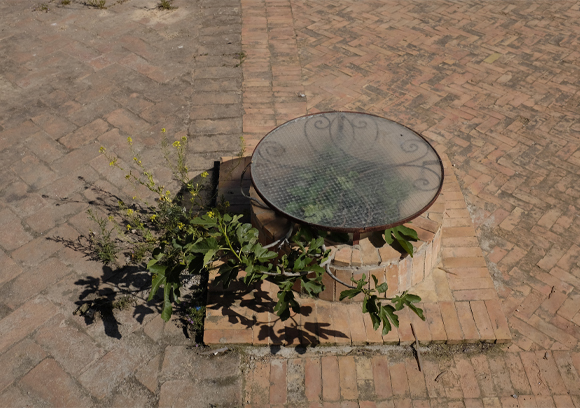
It is still Nightfall
Courtesy of the artist.
|
|
|
|
|
|
La série de photographies intitulée C'est encore la nuit, a été réalisée en même temps que l'installation éponyme qui s'est tenue dans les couloirs de la légendaire prison de Qara à Meknès (Maroc) - immense espace carcéral souterrain destiné à l'enferment de quelques 40000 prisonniers et esclaves et construit au 18e siècle à la demande d'un sultan. Les photographies, contrairement à l'installation, n'offrent aucune vue de l'intérieur de l'architecture et se contentent de rester en surface. Elles mettent en scène les oculus, les systèmes circulaires d'éclairage et d'aération de la prison.
Sur le plan architectural, les photographies observent les quelques rares éléments qui assurent un lien entre l'extérieur du bâtiment et l'intérieur. Elles sont à mettre en relation avec l'installation du même nom qui interroge le rapport de l'observateur contemporain au monde à l'aide de la notion de quête mystique présente dans la doctrine soufi, à a fois exploration du moi profond, entreprise d'acquisition du savoir et de connaissances et recherche du divin au sein de la création. Photographies et installation constituent les deux faces d'une même démarche artistique. La série photographique pourrait être présentée comme la version diurne du projet en quelque sorte. L'intérieur du bâtiment demeure invisible, et son architecture ainsi que ce qui s'y passe sont entourés de mystère. L'occultation dramatise la recherche initiatique en ménageant une forme de suspens.
Le lien avec l'extérieur est extrêmement ténu. Les bouches circulaires, aux dimensions réduites, sont à peine visibles et se distinguent peu du sol d'où elles émergent. Loin de renseigner le spectateur sur ce qui lui est caché, elles ne font qu'accroître le mystère tout en communiquant un sentiment d'enfermement, de privation et de suffocation qui est à mettre en lien avec une forme d'aliénation du sujet au début de sa quête telle que celle-ci est décrite par la doctrine soufi - sujet séparé d'avec lui-même et coupé de son désir profond. Elles expriment également en le dramatisant un lien direct entre l'accès à la connaissance et l'accès à la liberté.
Cette vision de surface qui ne laisse rien voir, se constitue comme une forme de frustration d'un désir voyeuriste, suggère pourtant que la recherche de soi et l'appréhension du monde dans sa réalité objective est une quête qui va bien au-delà des simples apparences. Il n'est pas uniquement question de frustration des désirs dans ces photographies. Elles montrent ou nous rappellent qu'une plante en croissance peut aisément briser la pierre ou la roche - que rien ou presque ne peut arrêter sa progression. Les images, mêlant architecture et végétation envahissante en croissance, sont comme autant de figurations discrètes du désir à l'œuvre - désir amoureux, soif de connaissance ou de liberté, se nourrissant d'obstacles et les abolissant d'un même geste.
Studio Fatmi, Septembre 2016.
|
|
The series of photographs entitled It’s Still Nightfall was created at the same time as the eponymous installation held in the corridors of the legendary Qara prison in Meknès, Morocco, a huge underground jail designed to detain 40,000 prisoners and slaves, built in the 18th century at the request of a sultan. The photographs, contrary to the installation, don’t show the inside of the place’s architecture and remain on the surface. They feature the oculi, the prison’s circular lighting and ventilation devices.
In terms of architecture, the photographs observe the few elements that create a link between the inside of the building and the outside world. They are to be linked up to the installation that questions the relation of the contemporary viewer to the world using the notion of mystical quest found in the Sufi doctrine, in the sense of both an exploration of one’s inner self, an initiative to acquire knowledge and a quest for the divine within Creation. The photographs and the installation constitute two facets of a single artistic process. The photographic series could be presented as the diurnal version of the project. The interior of the building remains invisible, its architecture and what goes on inside are wrapped in mystery. This occultation dramatizes the initiatory quest by creating a form of suspense.
The link to the outside is minimal. The small circular oculi are hardly visible and almost can’t be distinguished from the ground they emerge from. Far from informing the viewers on what is being hidden from them, they only increase the mystery while conveying a feeling of imprisonment, deprivation and suffocation that can be related to a form of alienation of the subject at the start of his quest as described in the Sufi doctrine – a subject who is separated from himself and his profound desire. They also express and dramatize the direct link that exists between access to knowledge and access to freedom.
This superficial vision that doesn’t reveal anything constitutes a form of frustration of a voyeuristic desire, yet it suggests that the quest for oneself and the apprehension of the world in its objective reality is a quest that goes beyond mere appearances. These photographs are not just about the frustration of desire. They show us or remind us that a growing plant can easily break the rocks, that almost nothing can stop its progression. These images combining architecture and growing and invasive vegetation are like discreet figurations of desire in motion (romantic desire, the thirst for knowledge or freedom…), nourishing itself from obstacles while simultaneously abolishing them.
Studio Fatmi, September 2016.
|
|
|
|